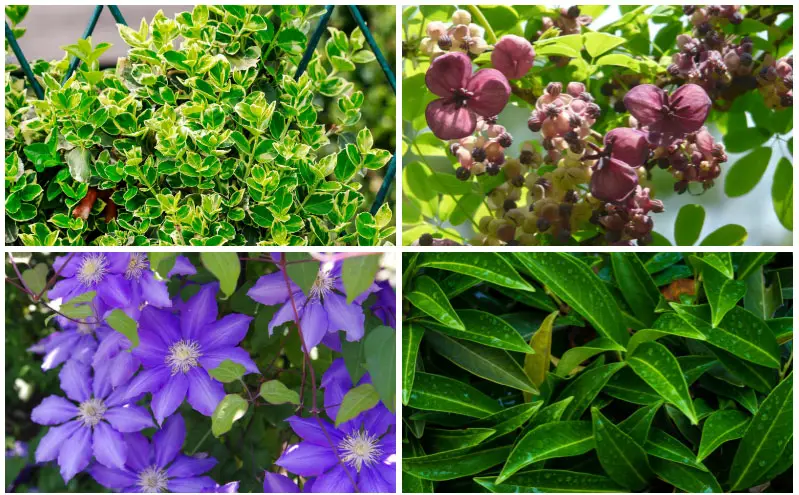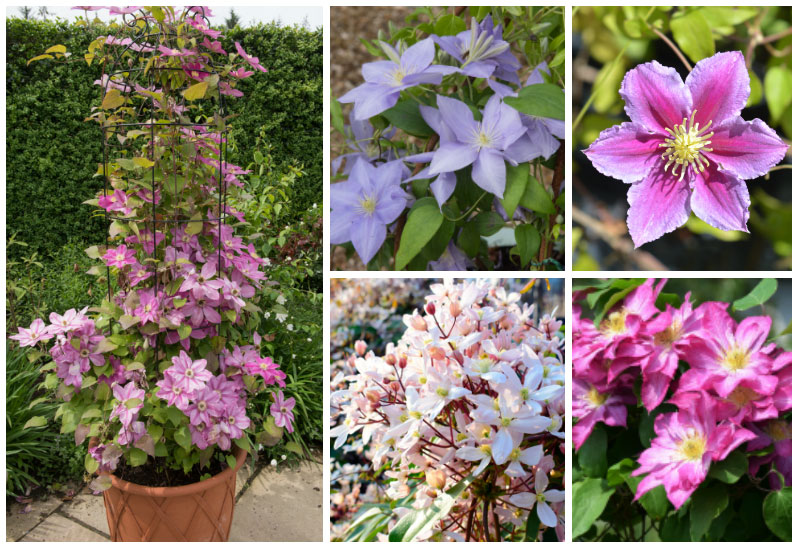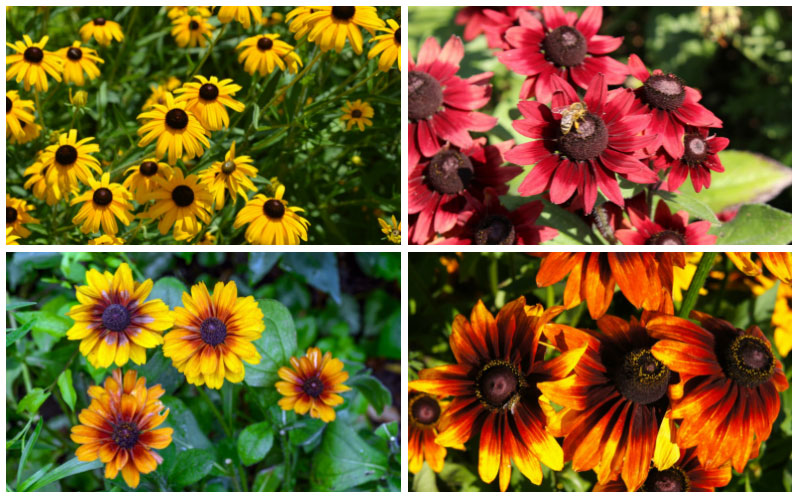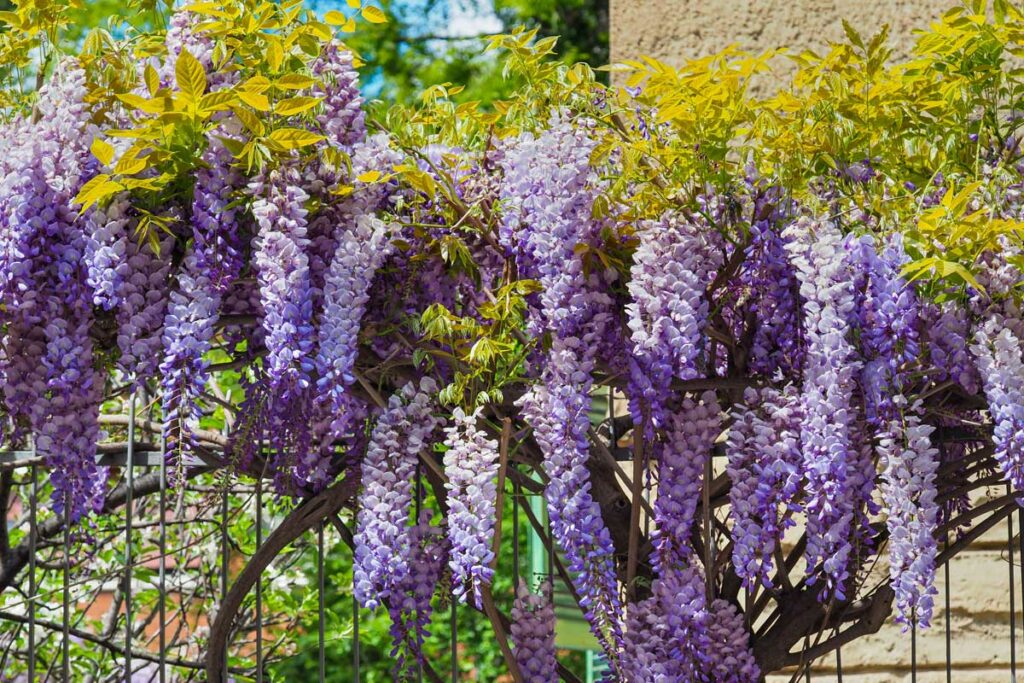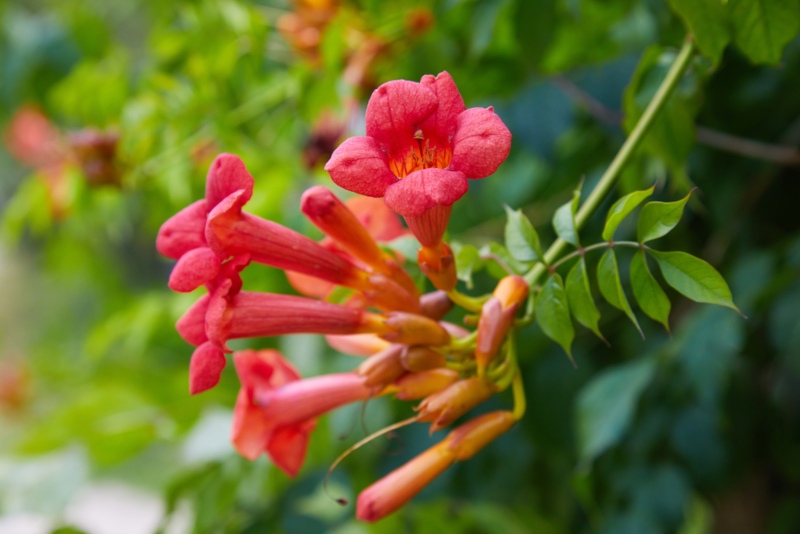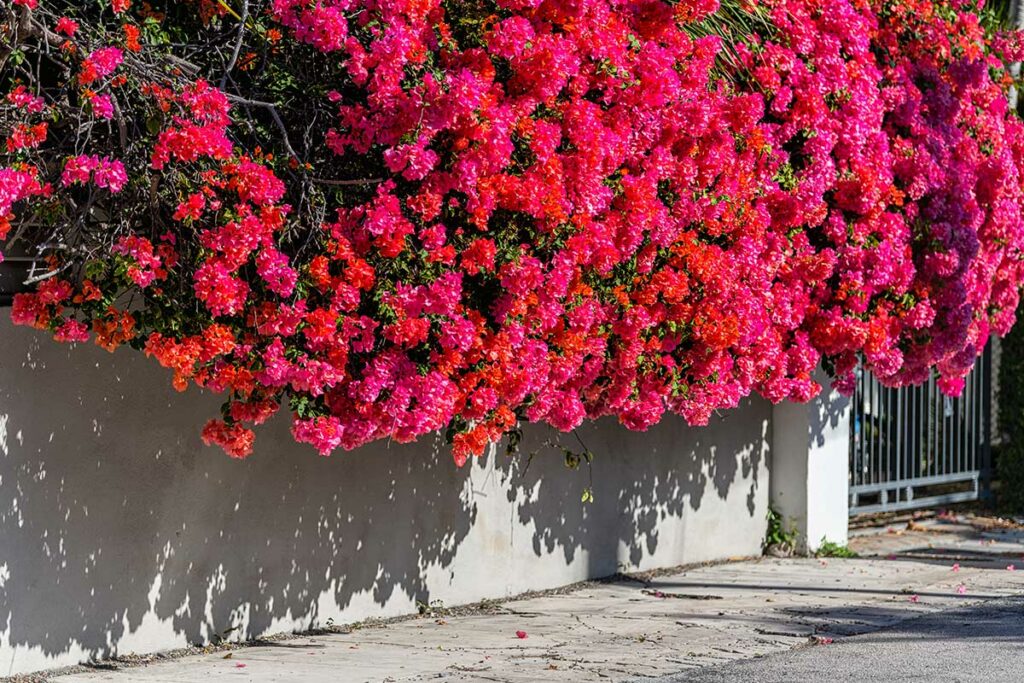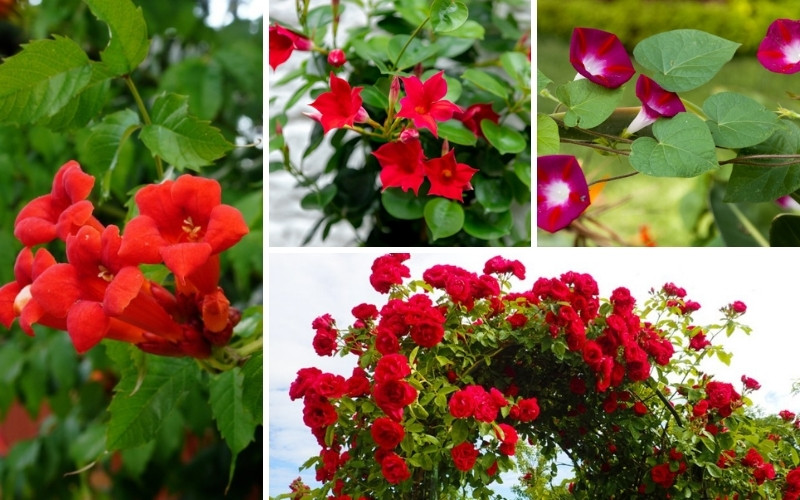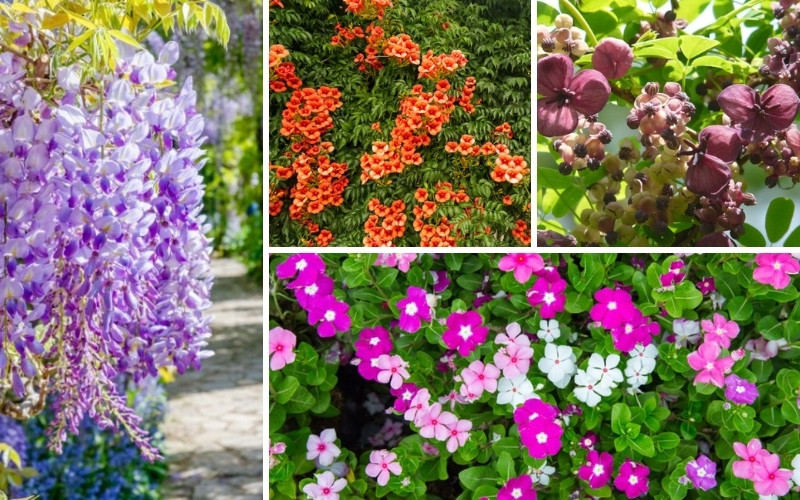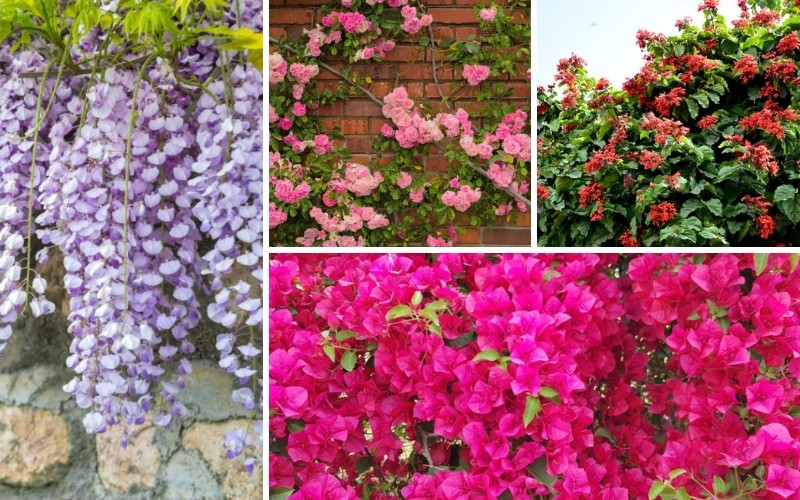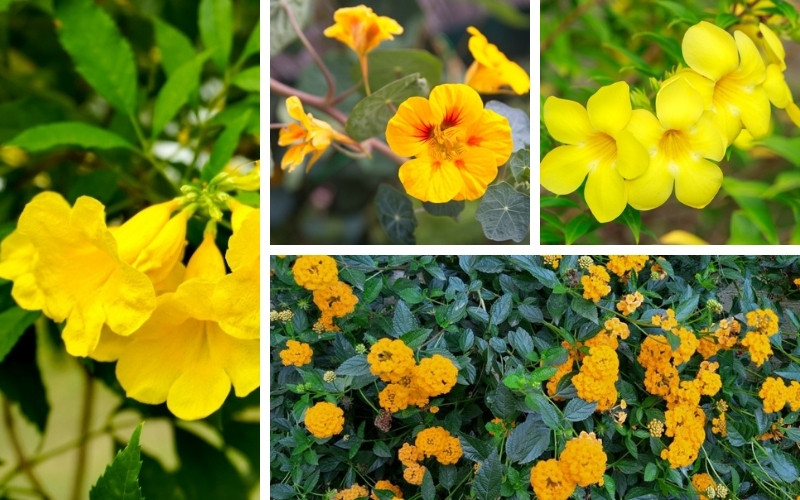
Flowering vines can be a jaw-dropping addition to a garden or landscape design, whether they are added to a chain link fence or a porch post. In this article, we highlight ten of our favorite yellow flowering vines for a cheerful, bold pop of color that will wow your friends and neighbors.
1. Carolina Jessamine (Gelsemium sempervirens)
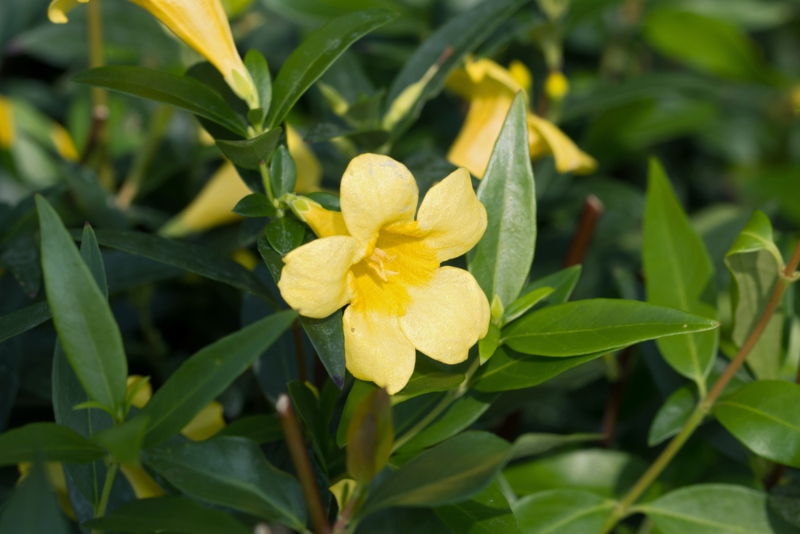
This gorgeous flowering vine is native to the Southern United States and is the state flower of South Carolina. It is winter hardy to USDA Zones 7 through 10 and grows best in moist, well-drained soil. This flowering vine requires full-sun to bloom, although it can tolerate partial-shade.
It features funnel-shaped canary-yellow flowers with a deep golden center that pop against narrow, emerald-green leaves, which take on a bronze hue in the winter months.
Carolina Jessamine will grow up to 20 feet tall when supported and often grows on tree trunks and chain-link fences surrounding pools or tennis courts. Once it reaches its full height it begins growing outward, cascading in a waterfall of bright yellow flowers.
2. Black-Eyed Susan Vine (Thunbergia alata)
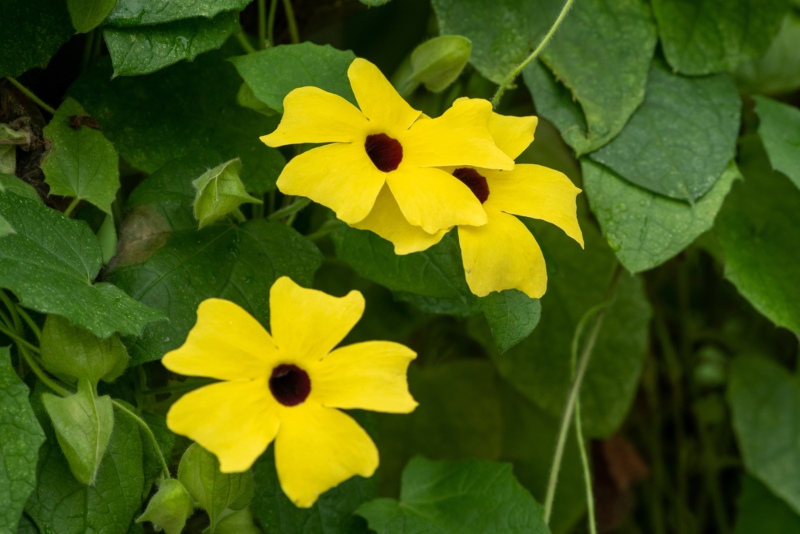
Black-eyed Susan vines are a bright, cheerful plant that is easy to propagate and looks stunning fully-grown. It is a perennial plant commonly grown in USDA Zones 10 and 11, but can also be grown as an annual plant in zones 3 through 9.
When cared for correctly, this vine can grow up to 8 feet tall. It requires a vertical structure like a trellis or arbor to give it something to twine around.
As a flower native to Africa, Black-Eyed Susan vines require warm temperatures and well-drained soil. It performs best in the summertime as an annual. The flowers range from a deep yellow to orange, salmon, and white with black centers.
3. Yellow Trumpet Vine (Campsis radicans f. flava)
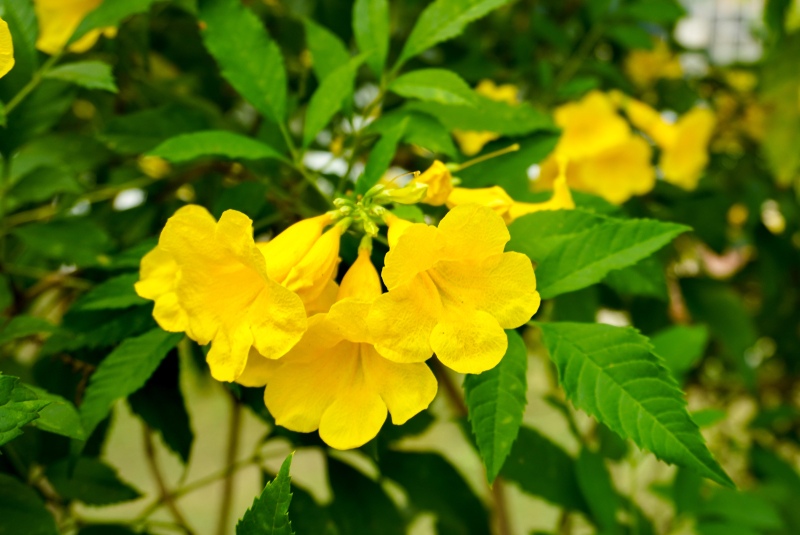
Yellow Trumpet Vine is tolerant of a wide variety of soils and temperatures, and is generally considered to be a hardy plant. It isn’t picky about where it grows, and can quickly reach heights of 20 to 40 feet if left to its own devices. Careful and regular pruning is necessary with this aggressive vine.
It has flamboyant, peachy-yellow, and orange flowers with a trumpet shape that are popular with pollinators like hummingbirds. Each bloom is about 3 inches long. They bloom throughout the summertime and grow best in USDA hardiness zones 4 through 9.
4. Yellow Honeysuckle Vine (Lonicera flava)
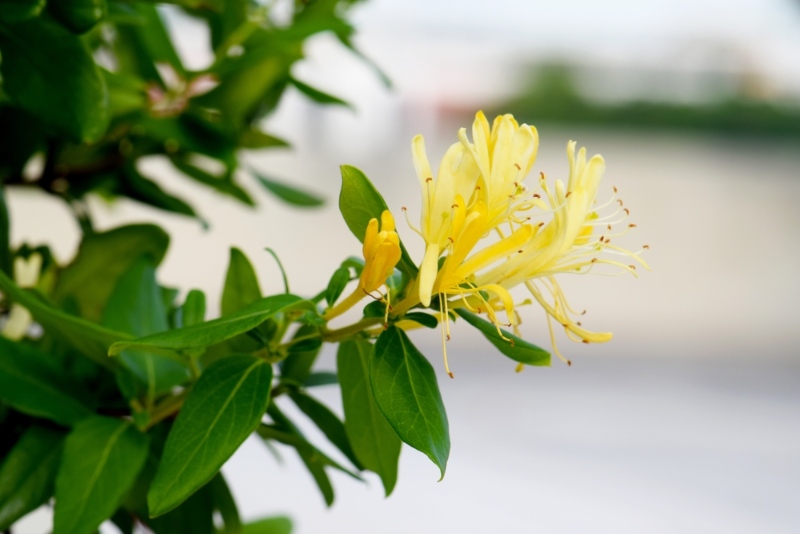
Yellow Honeysuckle is a woody vine that requires little maintenance and will reward you with its gorgeous tubular blooms and signature scent. It is grown in rocky or sandy soil that has excellent drainage and requires moist conditions and 6 or more hours of direct sun.
This vine blooms in mid-to-late spring in USDA hardiness zones 5 through 8. Its dark yellow flowers have a heady fragrance, with notes of fruit and vanilla, and it attracts butterflies, hummingbirds, and birds.
5. Nasturtiums (Tropaeolum majus.)
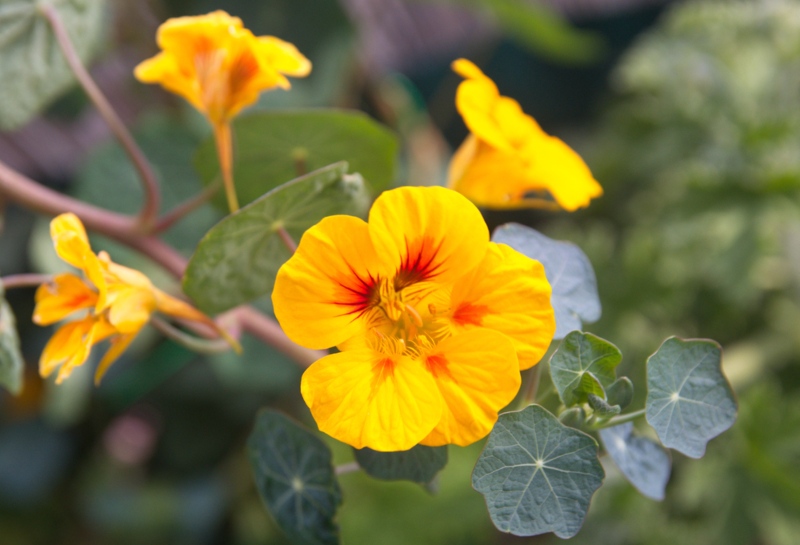
Climbing or Trailing Nasturtiums are perennial flowers that have bold yellow and orange blooms and green foliage. They are commonly used in vegetable gardens and to attract pollinators like bees, hummingbirds, and butterflies. Both the blooms and their circular, green leaves are edible and are frequently used in salads or as garnishes.
This vine requires 6 to 8 hours of direct sunlight and well-draining soil for maximum blooms. They are generally drought-tolerant plants but prefer moist soil. For this reason, they grow best in summer in USDA zones 9 through 11. Trailing Nasturtiums look particularly lovely in hanging baskets or flower boxes.
6. Firecracker Vine (Ipomoea lobata or Mina lobata)
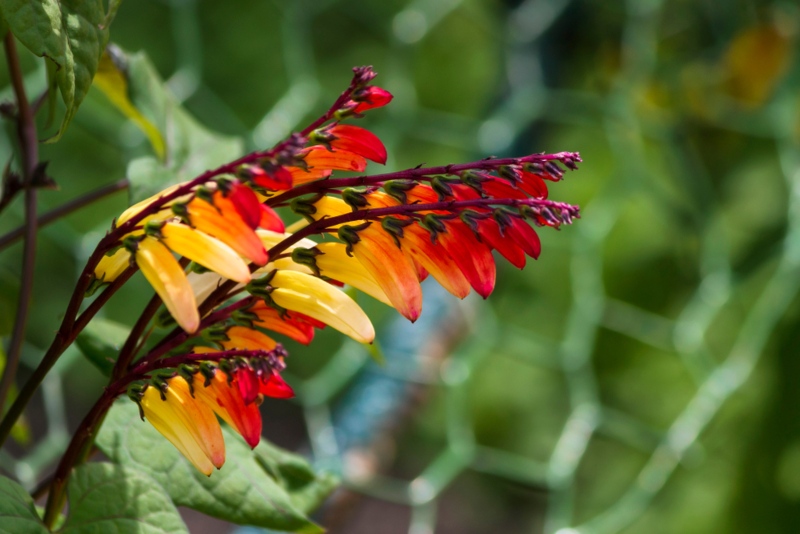
Also known as the Spanish Flag, the Firecracker Vine is a dazzling plant native to Central and South America. It is a member of the morning glory family that prefers full sun and moist, well-drained soil. When given support, this fast-growing vine can grow up to 20 feet tall.
The flowers grow vertically off of dark-purple stems. As they grow and age, the blooms change color, resulting in an ombre effect that includes white, yellow, dark orange, and red.
7. Yellow Mandevilla (Pentalinon luteum)
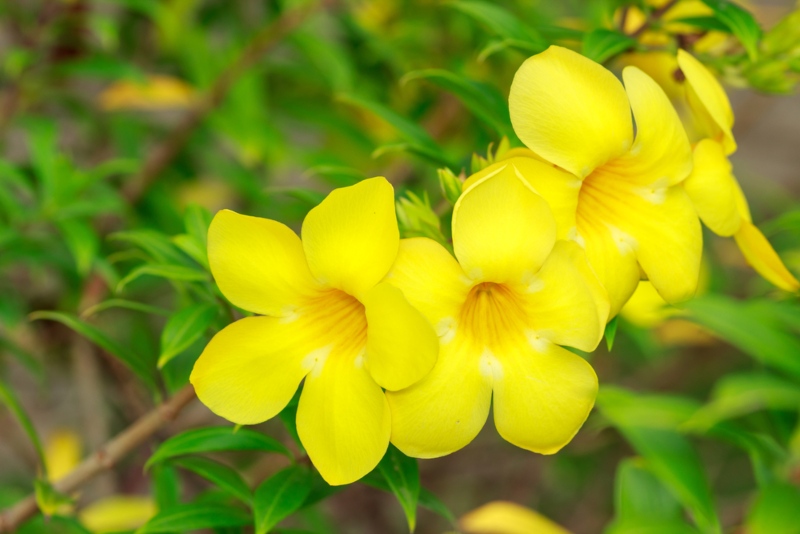
This tropical flowering vine features bold, bright yellow flowers with five petals and a trumpet-like shape. When it’s young, this plant can be trained to grow vertically on arbors or trellises up to 8 feet tall. It requires full sun and grows best in USDA zones 10 and 11.
Yellow Mandevilla has a long growing season, primarily blooming in summer and fall. In some areas of the United States, it can bloom into the winter.
8. Butterfly Vine (Mascagnia macroptera)
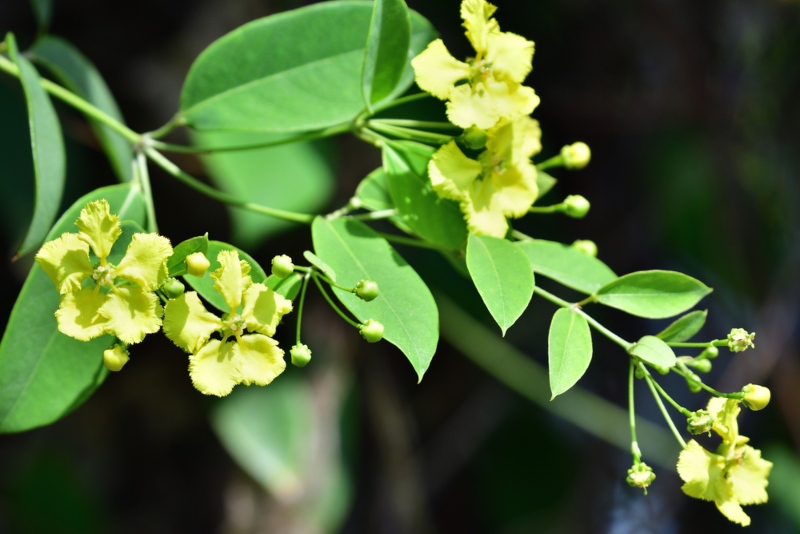
Nobody loves heat and direct sunshine quite like a butterfly vine. They require minimal water once established and can be easily trained to grow on fences or trellises. When left alone, they can grow up to 20 feet tall in spring and fall. It is native to Mexico but grows best in USDA zones 7 and 8.
The yellow flowers on the Butterfly Vine are small and rather delicate. When their blooming season is over, they produce rust-colored seed pods that resemble butterfly wings, hence its name.
9. Devil’s Darning Needles (Clematis virginiana L.)
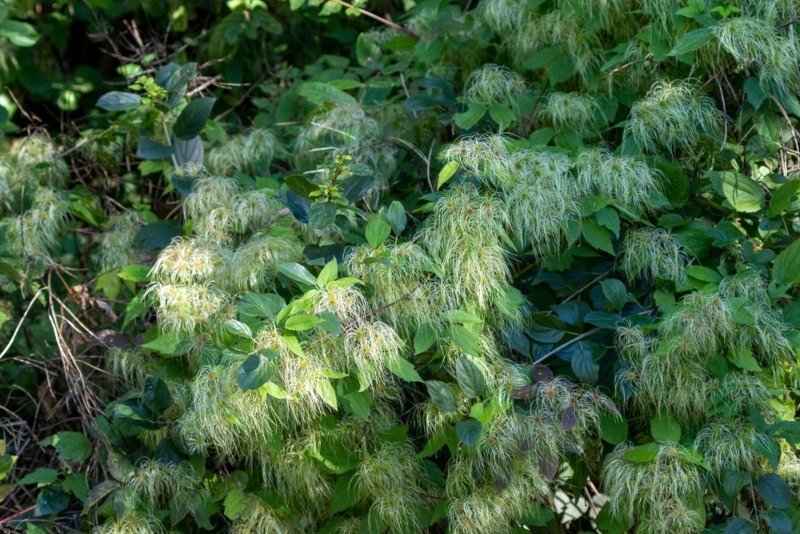
If you’re looking for a vine with firework-like blooms, Devil’s Darning Needles are the plant for you. They have white and yellow flowers with narrow petals that resemble fireworks exploding across the sky. When left unattended, these showstopping vines grow in spiky clusters that climb along riverbanks and man-made structures like fences. They will also grow around other plants and can reach up to 20 feet in a single year.
The blooms have a subtle scent that attracts pollinators. The foliage is a brilliant dark green that is toxic to humans. Pruning the plants is recommended to encourage increased blooms.
They are commonly found in places like Georgia, Kansas, Virginia, and Louisiana.
10. Trailing Lantana (Verbenaceae)
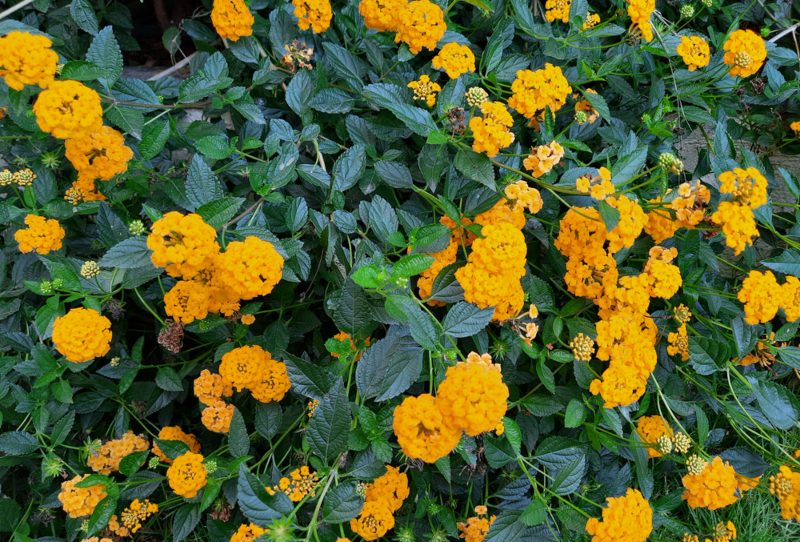
If you want to attract butterflies to your garden, you could plant some trailing Lantana. This is a ground covering vine that produces golden yellow flowers from spring to the first frost. They grow best in Zones 8 and 9 and are resistant to deer, rabbits, and common pests.
The flowers are small clusters that look gorgeous in full bloom. The vines can reach up to 2 feet tall when given full-sun and acidic, well-drained soil. They are toxic to humans and should never be consumed by humans.
Conclusion
Yellow flowering vines are gorgeous plants that provide a touch of brightness and cheerfulness to any garden or landscape. They have a wide range of hardiness zones; however, most require well-drained soil and full sun for best results. Make sure to research your hardiness levels and select flowers that will do well in them before purchasing.





